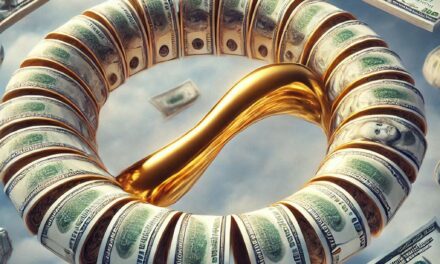I got a minor in psychology in college, so naturally I think I know everything there is to know about human psychology… And can name my ex-girlfriends’ mental disorders.
Just kidding (maybe).
I am a huge fan of psychology research. I’ve had a fascination with the human mind since I was a kid.
I didn’t study business or finance or investing or any of that stuff in college. My major was English. But I wanted to be a teacher, so I also took psychology classes.
I wanted to understand how people think so I could speak to their needs, wants, aspirations and desires.
My favorite branch of human psychology is the still-emerging science of personality research. It’s one of the softer sciences within the psychology field.
Personality is a difficult thing to measure. You can take a biological approach, a behavioral one… Or you can test it using data.
One of the most popular personality tests is the Myers-Briggs Personality Type Indicator. It groups individuals into one of 16 categories (each of which has two sub-categories) based on answers to questions that measure key traits.
Today I’m going to tell you how the Myers-Briggs helped me figure out who I am as an investor.
I’ll also reveal how it helped me identify a key difference between Mike and Chad …
They are nearly identical, but there’s one thing in their personality profile that sets them apart, and that difference tells you everything you need to know about their investing approaches.
First, a little backstory…
An Introduction
When I took Mike Carr’s Fundamentals of Technical Analysis course at the New York Institute of Finance a couple years ago, he taught me the difference between systems traders and discretionary traders.
Systems traders create precise rules-based algorithms to pick trades. Discretionary traders, meanwhile, make less calculated trading decisions that tend to rely on sentiment and “gut feeling.”
Systems traders think discretionary traders are idiots who make knee-jerk, emotional decisions. Discretionary traders think systems traders are fuddy-duddies who often fail to adapt to the market in real time.
There are also traders who focus on technical analysis (technical indicators and price charts) and others who focus on fundamental analysis (earnings, sales, revenue, stuff like that).
Most systems traders prefer technicals and most discretionary traders prefer fundamentals… but this isn’t always the case.
Mike Carr is a systems trader that uses technical analysis. I’m a discretionary trader that also uses technical analysis.
Neither of us care about fundamentals too much… but we take a different approach to technical analysis.
I prefer Chad’s approach, even though he’s a systems trader like Mike. As Chad likes to say in his Thursday Quick Takes and Bank It or Tank It series, price is the only thing that matters. Chad can look at a price chart and tell you whether the stock’s going to go up or down.
Will he be right every time? Of course not…
While Chad is still a systems trader, his approach to technical analysis is a little more discretionary than Mike’s. Mike would never recommend a trade based on his personal observations from a price chart, because his computer can tell him 1,001 different variables he can’t detect with the naked eye.
If you think computers are smarter than people, Mike’s your guy. If you like computers and people working together, you want Chad.
And if you like lucky son-of-a-guns like me with strong gut instincts, you might even want to take my advice.
The Difference Is in the Data
I had suspected this difference for a while, so back in May I asked both gentlemen to take the Myers-Briggs Type Indicator.
My theory was they would have the exact same personality type… and I was almost right.
Mike is an ISTJ. Chad is an ISTP.
What do these things mean?
“I” stands for “introverted.” These people tend to be quieter. They need less social interaction, and tend to be bookworms.
“S” stands for sensing. They have a measured approach for observing the world around them. This trait tends to be a little… systematic. You might see where I’m going with this.
“T” stands for thinking. This is similar. Thinking types use reason and logic to work out problems. They are extremely objective and don’t give much care for personal feelings or individual concerns.
Now here’s where they differ. Mike is a “J,” which stands for “Judging.” Chad is a “P,” which stands for “Perceiving.”
This last category is the most complicated, but the table below from Business Insider offers a great explanation.

Source: Business Insider
(Click here to view larger image.)
“Judgers tends to be organized and prepared, like to make and stick to plans, and are comfortable following most rules.
“Perceivers prefer to keep their options open, like to be able to act spontaneously, and like to be flexible with making plans.”
This describes Mike and Chad to a “t.”
Mike is a strict disciplinarian when it comes to markets. He was a high-ranking military officer. He excelled in the military by following orders — he succeeds in the market by following rules.
But Chad isn’t as strict. He can tell you what a stock is likely about to do next just by taking a glance at its price chart. And he can also tell you what a stock’s price is about to do next by looking at his trusty Profit Radar, the Relative Rotation Graph.
They have nearly identical personality types. But this one trait makes a world of difference. With the help of the Myers-Briggs Type Indicator, we can now quantify and measure this difference.
So What Am I?
We have two sets of fraternal (not identical) twins at True Options Masters.
Mike and Chad are nearly the same, save one difference. Mike Merson and I are actually the opposite of Mike and Chad… but similar to one another. I’m an INFP. He’s an ENFP.
We are also nearly identical… but the polar opposite of Mike Carr and Chad when it comes to investing.
We’re both discretionary traders. We like to break rules, and mainly use our intuition to navigate the markets.
But our main difference — the “I” and the “E” — is also very telling.
INFPs have lower energy and are very strategic. ENFPs have more stamina, so they can handle massive workloads and are willing to take the time to complete them.
I’m all about working smarter, not harder. Mike just works hard. It’s not to say he’s dumb… he just doesn’t have to be as strategic with his energy, because he has more of it.

(Click here to view larger image.)
This shows up in our investing styles. Mike publishes our Chart of the Day series and uses technical analysis and trading software to show patterns in stocks. It’s hard work, but he’s thorough.
He’s also extremely plugged in on assets he’s bullish on — crypto, for example. He’ll spend a ton of time and energy researching to stay on top of the newest opportunities in any given market.
I do the absolute least amount of work possible. I don’t like working hard unless I’m really into what I’m doing. That’s why I only focus on a few stocks and only trade patterns I can detect with the naked eye. I read financial news only to determine its connection to a price chart in real-world terms.
I make most of my money a few months or even weeks out of the year. But I always stay in the game so I can stay plugged in… always thinking, always learning. I’m not afraid to make stupid trades so long as I learn something from them.
What Kind of Investor Are You?
There is a free version of the Myers-Briggs test that is very thorough at www.16personalities.com. It will explain everything about your personality type.
You can use this information to determine a number of things — from political affiliations, to any mental disorders your “type” might tend to struggle with, to what kind of friend and spouse you most naturally are.
Now, you can also use it to determine what kind of investor you are.
The results should tell you whether you’re more disciplined and rules-focused… or whether you’re more spontaneous and freewheelin’.
The biggest secret to success in the markets? Know yourself. This will help you get there.
Ciao,

Chris Cimorelli
Chief Editor, True Options Masters
Chart of the Day:
What’s Next for Oil?

(Click here to view larger image.)
West Texas Intermediate Crude Oil is now at its highest level in over six years…
Tell that to someone who was around for negative oil prices in 2020, and they’d probably laugh you out of the room.
But now, the question becomes… Does oil revisit its old, early twenty-teens highs? Or does it correct back down to its more recent range?
On a purely technical basis — we cannot ever discount the shenanigans of OPEC — I think oil heads lower, at least in the short term.
Note the divergence of both the MACD and RSI momentum indicators. As the oil price has made new highs, both those indicators suggest waning momentum.
Note that this is a weekly chart of oil — better for spotting medium-term trends. So if you’re bullish on oil stocks, you’ll probably get a better chance to pick some up in the coming weeks and months.
Best,

Mike Merson
Managing Editor, True Options Masters


![[QUIZ] Stop Trading Until You Know Your Personality Type…](https://banyanhill.com/wp-content/uploads/2021/10/1006-440x264.jpg)






